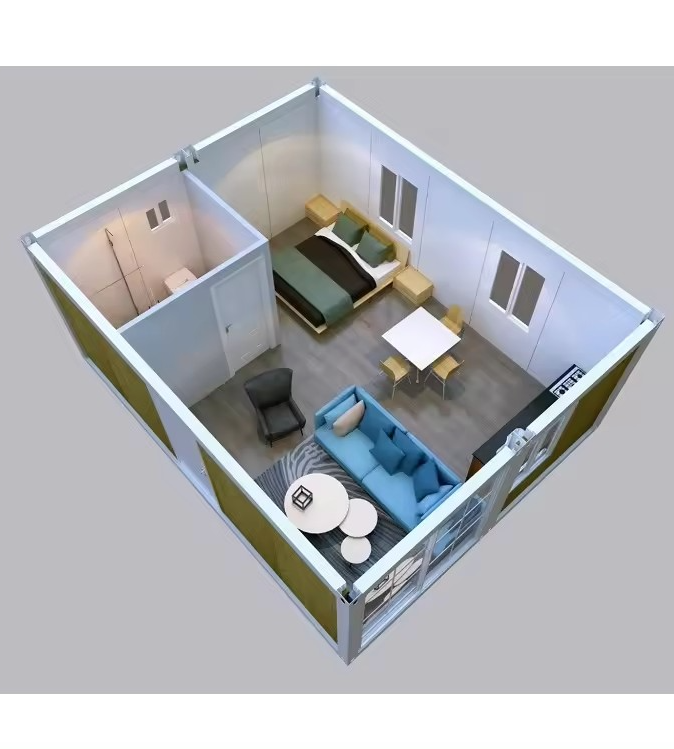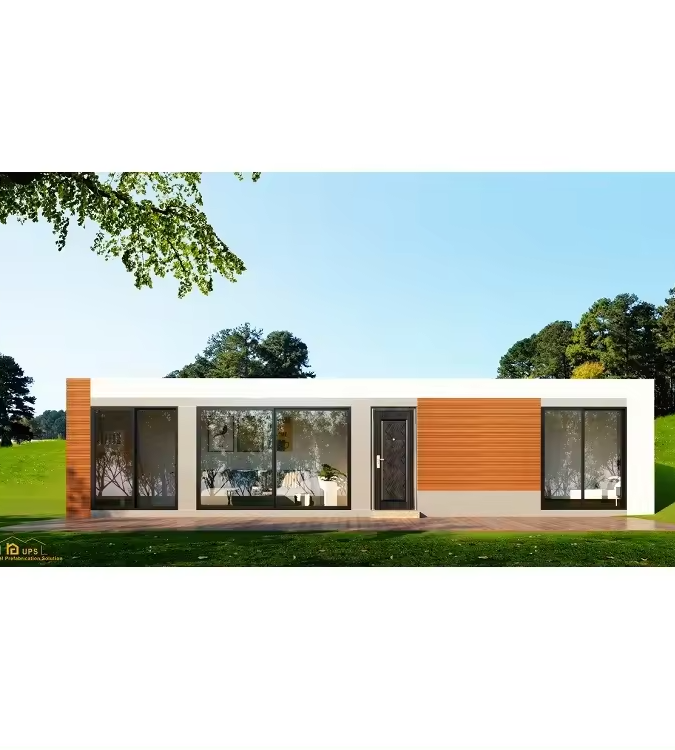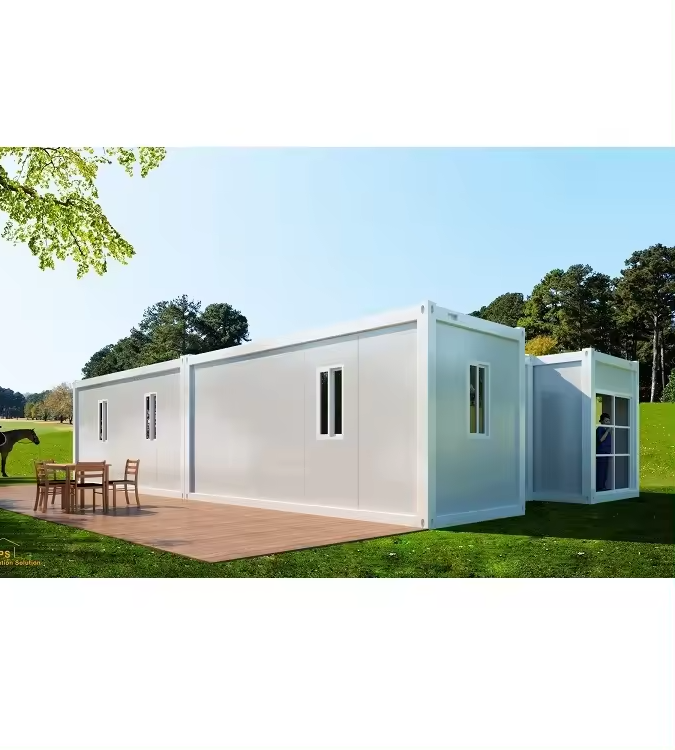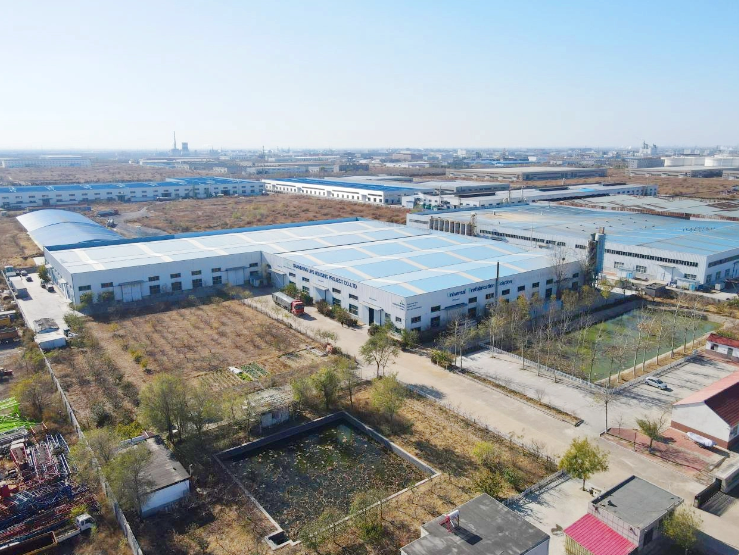One-stop Project Services
One-stop Project Services

At the heart of container building lies a commitment to sustainable construction practices, making it an environmentally conscious choice that resonates with the growing demand for eco-friendly solutions. The repurposing of shipping containers inherently minimizes waste, contributing significantly to the reduction of the construction industry's ecological footprint. Moreover, the energy efficiency embedded in modular construction, coupled with the recyclability of steel, aligns container buildings with the global movement toward greener building practices. Choosing container building is a proactive step towards shaping a more sustainable and environmentally responsible future for the construction industry.

Across a wide range of sectors, container-based construction has been able to transcend typical boundaries. Container buildings are used in various functions starting from modernized homes and innovative business premises as well as temporary structures in disaster management areas. The innate mobility of containers makes them easily transported for use on different project sites and purposes. It signifies flexibility which offers answers to changing needs in contemporary living and building processes.

These container buildings’ aesthetic is different and contemporary, something that architects, designers and home owners alike have found fascinating. As landmarks in urban landscapes, steel containers with industrial appeal fused with creative designing methods result to structures that are extraordinary. It is important also to note that container building does not only revolve around being functional but it also involves modern architectural aesthetics that challenge the conventionalities of the past and redefine how built environment looks like in a visual sense.

Container building is one of the pioneers in cost-effective construction. Repurposing containers for use as building materials reduces the material costs dramatically which makes it a cheaper option. Also, modular construction, on the whole, quickens the speed at which construction takes place leading to significant labor and related savings. As such container building does not just redefine architectural possibilities; it goes against the popular belief that state-of-the-art design should necessarily come at a high price.

Container building has gained rapid popularity in the lively field of modern construction, marking revolutionary transition in architectural design and its implementation. Beyond fashion, this advanced practice takes up shipping containers as the main component materials for buildings and questions the existing architectural conventions thus ushering a new era of pre-fabricated structures that are easily assembled. It is not only a change in design but also addresses issues pertaining to sustainability, costs and adaptability within the construction industry.

Shandong UPS Housing Project Co., Ltd., a group enterprise integrating R&D, design, production and sales, is a leader in the Chinese prefabricated construction industry, with over ten years’experience in low-rise prefabricated buildings. Advocating the concept of aesthetic innovation, customization and 100% green environmental protection, we create an ideal home together with customers by providing universal and one-stop service solutions. Main products are: cement house,container house,prefab house,prefabricated building,container building,container modular house,modular building.
The company's products are widely used for the temporary construction industry and permanent residences. The projects we had built include temporary hospitals, schools, villas, resettlement houses, office buildings, dormitory buildings, BNB hotels, etc. Around the world, the company is mainly engaged in the European, North American, South American, African and Southeast Asian markets, and has exported to more than 107 countries. The company has cooperated with many governments in large-scale projects, such as the resettlement project of 1,000 residential houses in Iraq, the construction of the police system of the Antigua government, the construction of the base of the DRC peacekeeping force, and the construction of the national comprehensive technology park in Myanmar.
Our key strength lies in providing a comprehensive one-stop service, ensuring a hassle-free experience for our clients. From design to delivery, our team manages every aspect of the process, offering convenience and efficiency throughout the entire prefab housing journey.
Tailoring our prefab houses to meet unique project requirements is at the core of our approach. Our commitment to flexible customization allows clients to choose from a range of design options, ensuring that each structure aligns perfectly with their specific needs and preferences.
With a focus on cost-effectiveness and rapid deployment, our prefab houses offer an economically sound solution for construction projects. The efficiency of our manufacturing processes ensures swift assembly on-site, reducing overall construction time without compromising on quality.
Benefit from our extensive experience of over ten years in the prefab housing industry. Our seasoned team brings a wealth of knowledge, honed through years of successfully delivering high-quality modular structures. Trust in our expertise to bring reliability and excellence to your projects.
Absolutely! Container buildings can be customized to meet your specific needs and preferences. You can choose from a variety of sizes, colors, and finishes, and add windows, doors, and insulation to create a comfortable and functional space.
The cost of a container building varies depending on the size, complexity, and customization of the project. However, they are generally more affordable than traditional construction methods, especially when considering the reduced labor and construction time.
Container buildings boast a durable steel framework, ensuring a long lifespan comparable to or even exceeding traditional structures, making them a reliable and resilient choice for long-term use.
Container building's cost-effectiveness stems from repurposing shipping containers, reducing construction materials and time, leading to substantial savings without compromising structural integrity.
